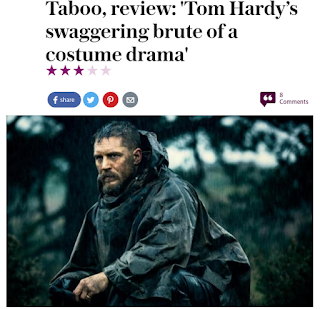I am perfoming Institutional Research so that I can identify which platforms are ideal for the broadcasting of my documentary 'The Big Question'.
BBC 3
In 2015, the BBC pledged to become an 'open platform' for creativity.
This gaurantee asures us, as film makers, that the BBC is a perfect place for us to work with to present our documentary series. The ariticle includes the BBC's director general, Tony Hall who states that the company is an "open BBC for the internet age." Our plan is to release 'The Big Question' solely on an online platform so it is easy to access for millions of viewers. The BBC already has an online channel, BBC 3, which has already been used by independant film makers such as Ben Brown. This is evidence for how relevant BBC 3 is at the moment, allowing for a large viewing audience. The BBC plans to open itself up to the culture presented all accross Britain, I believe our documentary series is just the tip of this iceberg.
The opening up of iPlayer will allow other broadcasters to show their content, which shows a widening of the company and the eagerness to accept all media from anybody. It also states that there will be a focus on online content, which displays a potentially perfect place for us to work with in terms of distributing our series. BBC 3 will make future production much broader in terms of content and also a much easier platform to submit media onto for a large viewing audience. It will open up the independent media industry.
http://www.bbc.co.uk/news/entertainment-arts-34168310
Channel 4
In their statement of promises, Channel 4 uses the phrase 'foster' in terms of how it interats with budding film makers which is key for us as it assures us that Channel 4 has made a gaurantee that they will support us. Channel 4 also states taht they will work with the digital age, using differenet forms of media to boradcast their content, this will inevitably include online, which is already happening (4OD). They also say "We will use our reputation for risk and non-conformism to engage a younger generation in the values of public service broadcasting." This is directed at the same target audience as us, the young and amibitous. They also strive to be the first choice when independant film makers are looking for a platform to work with and broadcast their content with, which is very convenient for us, as this is exactly who we are.
http://www.channel4.com/about_c4/promises_2001/promises_intro2.html
Youtube
YouTube, an incredibly currenet online platform, was launched in 2005. It is the largest place for anybody to upload a video independently for a worldwide audience to view. I view this as one of the most ideal places for us to use as a platform for our documentary series, we can use social media oursleves to advertise our series, and do this completely independently, whereas with the other companies we would work alongside them to acomplish the end goal, we could do this of our own accord, which in some ways gives us our own freedom.
https://www.youtube.com/yt/about/
Researching into the different media platforms that I could potentially broadcast my documentary series on is essential to the planning of 'The Big Question' because I need to know where I am preparing my product for and the branding and style that I should prepare to incorporate with my products.

















